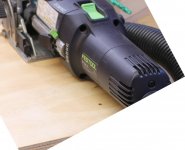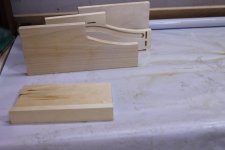Crazyraceguy
Member
- Joined
- Oct 16, 2015
- Messages
- 5,519
ChuckM, that is essentially what my set up is doing. It just happens to be on a taller bookshelf were the bench dogs/fence eliminate the fiddling. A series of spacers work with the dog holes to make all of the parts identical/repeatable, but the reference point is the base of the machine. It uses the paddles on the sides and a center mark on the fence. On the particular job, there were 6 of these units, all machined at once so the they are completely interchangeable. No sorting or marking of the parts.


